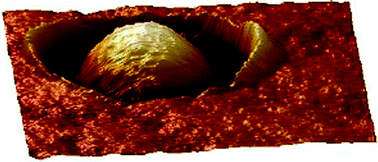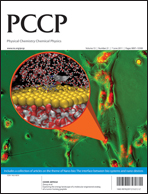Adhesive properties of Staphylococcus epidermidis probed by atomic force microscopy
Abstract
Mapping of the surface properties of Staphylococcus epidermidis and of biofilm forming bacteria in general is a key to understand their functions, particularly their adhesive properties. To gain a comprehensive view of the structural and chemical properties of S. epidermidis, four different strains (biofilm positive and biofilm negative strains) were analyzed using in situatomic force

- This article is part of the themed collection: Nano-bio: The interface between bio-systems and nano-devices

 Please wait while we load your content...
Please wait while we load your content...